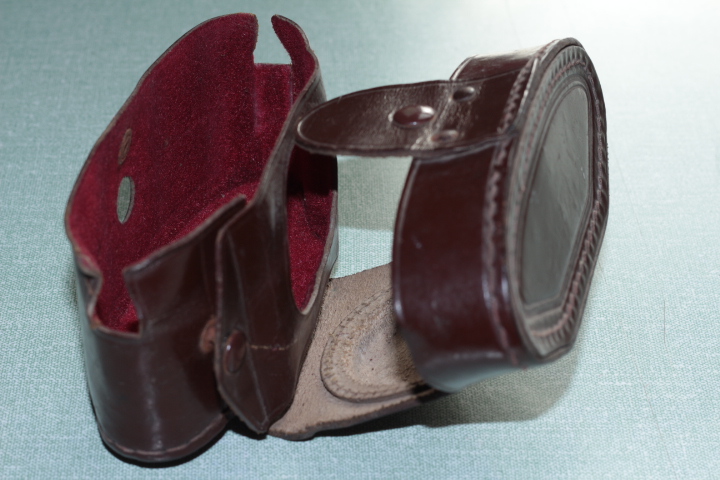This is a very non-standard camera. Firstly, it is Italian which means a distinct design philosophy that is very different to the German. Secondly, it has one control - shutter speed: either B or I (Instantaneous).
.
 |
| Ferrania Ibis closed (C) John Margetts |
lens: Primar
focal length: 75 mm (ish)
apertures: fixed
focus range: fixed
lens fitting: fixed
shutter: Ferrania own
speeds: two: B and I
flash: PC socket
film size: 127
The camera measures 120 mm by 70 mm high and 55 mm deep (closed) or 80 mm (open). It is a small camera and fits entirely in my hand. It also fits comfortably in my jacket pocket so is an eminently usable travel camera. The only down-side is the size of the viewfinder eyepiece which is unusably small while wearing spectacles. It is made entirely from a cast light metal (aluminium?). As far as I can see, there is a single casting for the body and a second casting for the back.
 |
| Ferrania Ibis open (C) John Margetts |
The lens is held on the front of a chrome tube that slides into the body when not in use. The lens seems to be a single element lens - that is, a meniscus lens and is coated (it has a blueish tint). The shutter is also in the chrome tube and is a simple, everset type. It has two speeds only - Instantaneous or Bulb. the aperture is behind the shutter. the front of the housing is marked 1:9 which I take to be the aperture (but more later). Measuring the distance from the approximate centre of the lens to the film 'plane' gives me a focal length of 75 mm which would be 'normal' for 127 film. If that is right, the aperture of 4 mm diameter would give a fixed aperture of f/19 in which case the 1:9 on the lens fascia is not the aperture. Also on the collapsible chrome tube is a PC socket for flash - no accessory shoe is provided so the flashgun will require a bracket to hold it onto the tripod boss (the standard 1/4 inch Whitworth or UNC thread).
 |
| Ferrania Ibis - rear view |
The film gate measures 55 by 42 mm so a 'normal lens' would have a focal length of 70 mm so the lens provided is 'normal' - equivalent to 43 mm on a 35 mm camera or 28 mm on a APS-C digital camera. The top of the camera has the shutter release to the right of centre and fairly forward. The viewfinder is pretty much central and to the left is the film advance knob. Being a film camera, there is no need for a rewind knob. On top of the viewfinder is a plate with details of ferrania films of the day.
 |
| Inside and the detached back |
The back of the camera is held in place at each end by sliding strap lugs. There is a central red window for seeing the frame numbers on the film backing paper.
Inside is redolent of cheap film cameras. To offset the aberrations inherent in a meniscus lens, the film 'plane' is curved (so not strictly a plane). The new film goes at the right and the take-up spool is on the left. Both spools are held in place by a single spring steel strip.
 |
| Inside showing the curved film 'plane' |
The outside of the camera is painted grey with dark grey leatherette patches. Compared to what Zeiss Ikon and Voigtlander were doing in Germany at the same time; it is a very crude, cheap looking camera but it is not without charm. The camera comes in a purpose made and rather nice leather case. As this camera uses 127 film which, while still available, is rather expensive I shall not be trying this camera with film.
 |
| Empty case |
 |
| Case with camera |

No comments:
Post a Comment